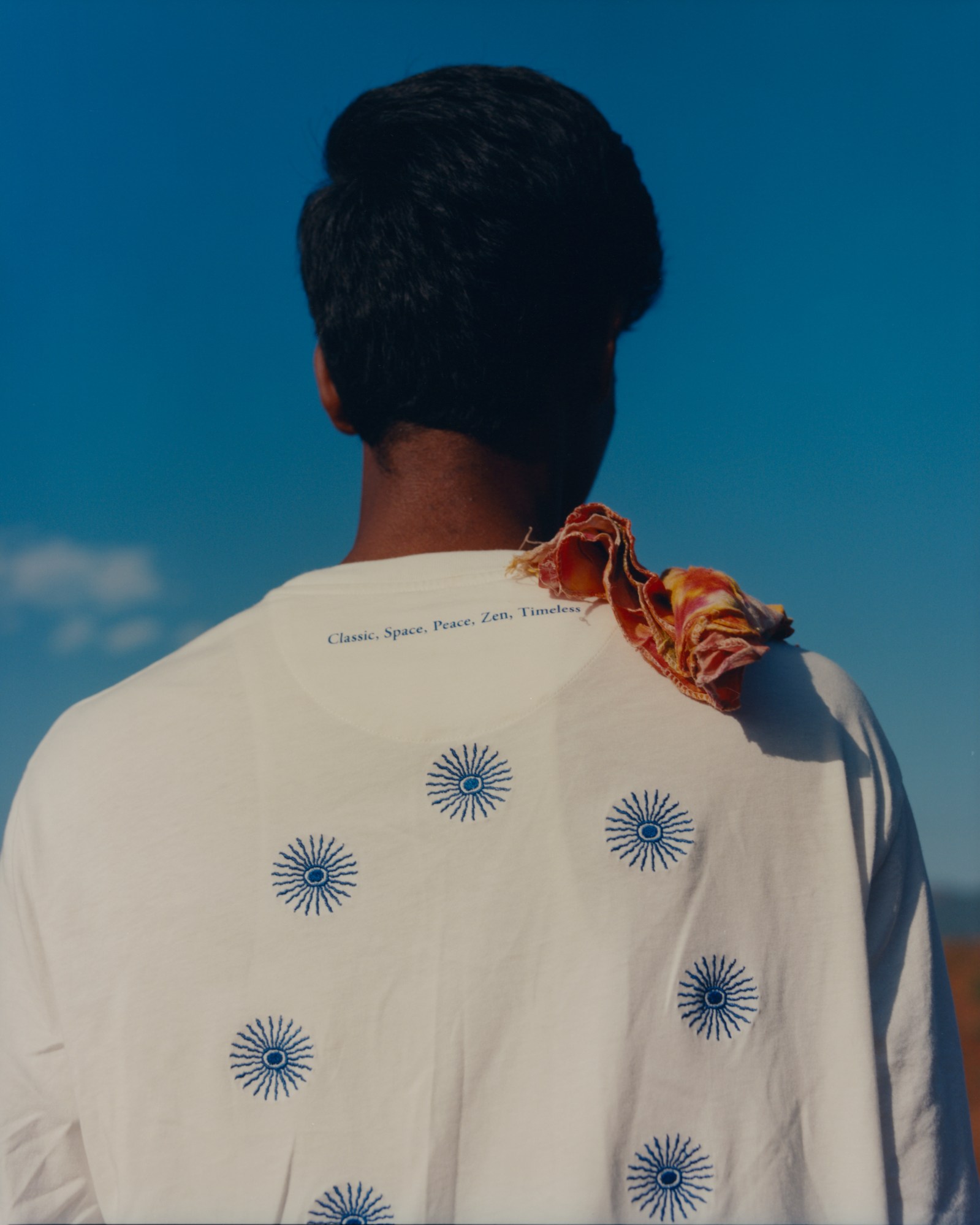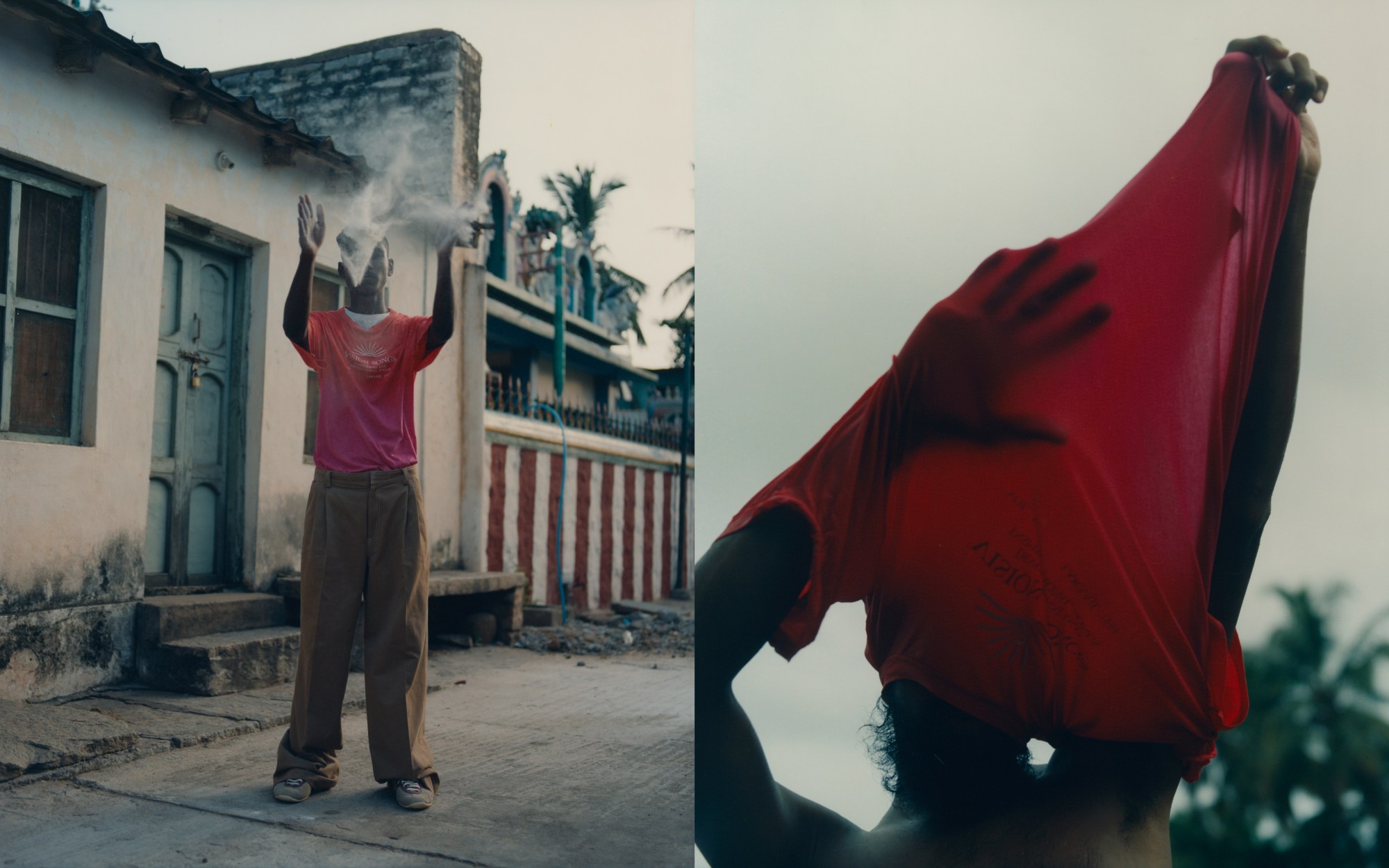If you were among the fortunate attendees of the opening of A Time For New Dreams, Grace Wales Bonner’s 2019 show at London’s Serpentine Gallery, then you’ll no doubt remember a moving performance by a man playing an electronic zither, entirely swathed in orange. That man was Laraaji, a pioneer of celestial music, mystic and laughter meditation practitioner. He first began playing music in public space in the mid-70s, becoming known for trance-inducing auto-harp performances across New York that even caught the ear of Brian Eno. That night, though, he’d flown into town to host an immersive listening session — a meditative sonic foil to the fashion designer and researcher’s first institutional exhibition.
Though this was just their first meeting, the worlds they’ve both articulated through their practices complemented each other so naturally that they went on to embark on further projects. The night after the opening, Grace hosted Devotional Sound — an evening of performances by Sampha, Klein, and, of course, Laraaji — in a West London church; months later, Devotional Sound hopped across the pond to St. Peter’s Church in New York, where the New Age musician was joined by Solange, Brian Jackson and Standing on the Corner. Now, their collaboration has culminated in Vision Songs, a fully-fledged capsule collection.
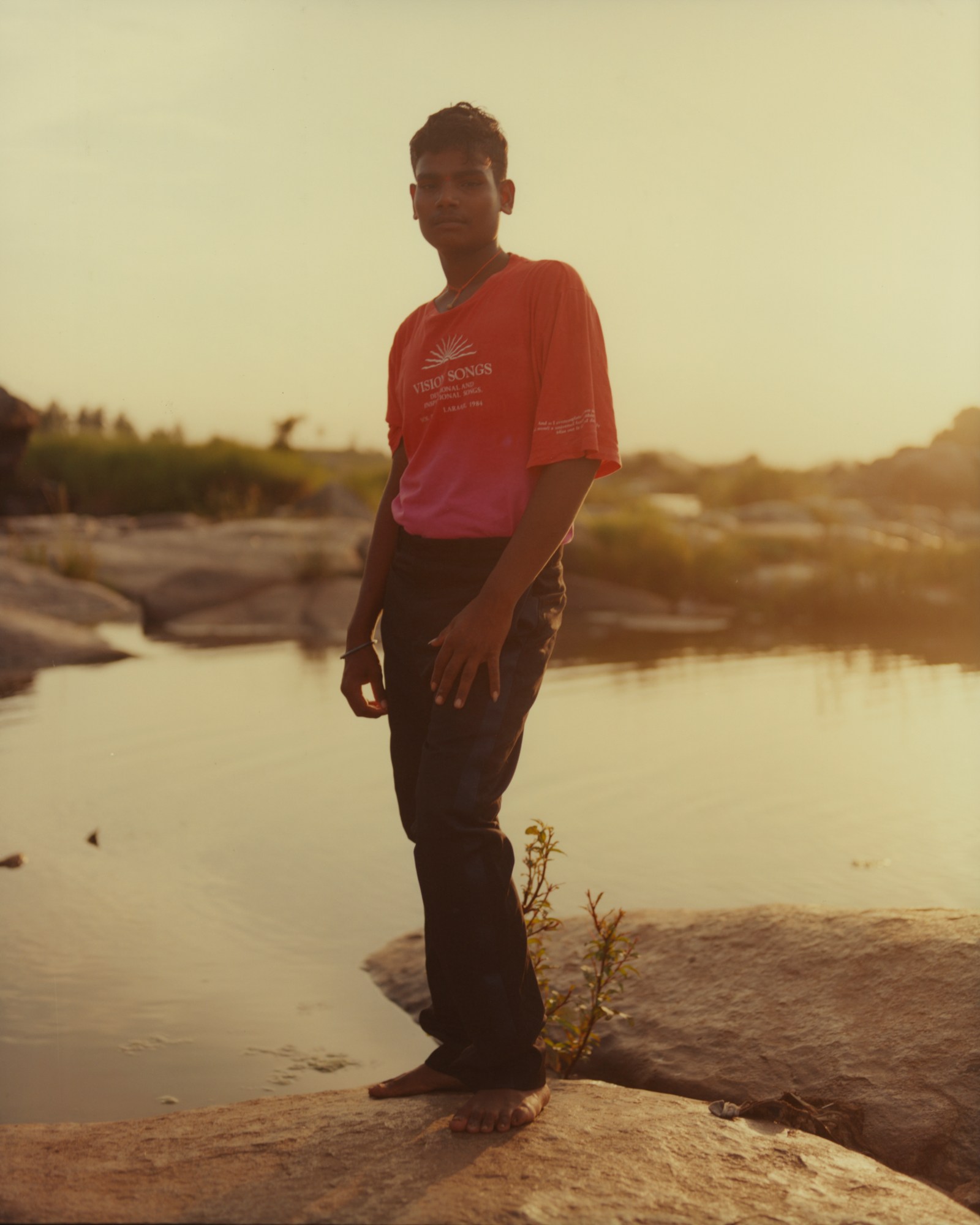
Taking its title from Laraaji’s 1984 album, Vision Songs Vol. 1, the capsule of hand-dyed cotton jersey pieces in sunset gradient hues — seen here in a photo series shot by photographer Bharat Sikka in Hampi, India — are intended as an ode to the ecstatic energy of its music. “An important element of my work is about honouring traditions and people and the way that information is passed on,” Grace says. “With Vision Songs, I wanted to acknowledge the amazing gift that Laraaji presented to the world, create a dialogue around it, and share it with more people that it would resonate with.”
It’s also been created with the intention of giving back in a tangible sense, with all profits generated from the sale of the 60 limited edition pieces to be donated to Care India Foundation, an NGO working for the empowerment of women and to bring health education in rural areas.
To mark the release of the capsule — which you can buy here — Grace and Laraaji sat down for an exclusive discussion about how they first met, the spiritual value of the colour orange, and how they approached translating the spiritual magnitude of Laraaji’s music to fashion.
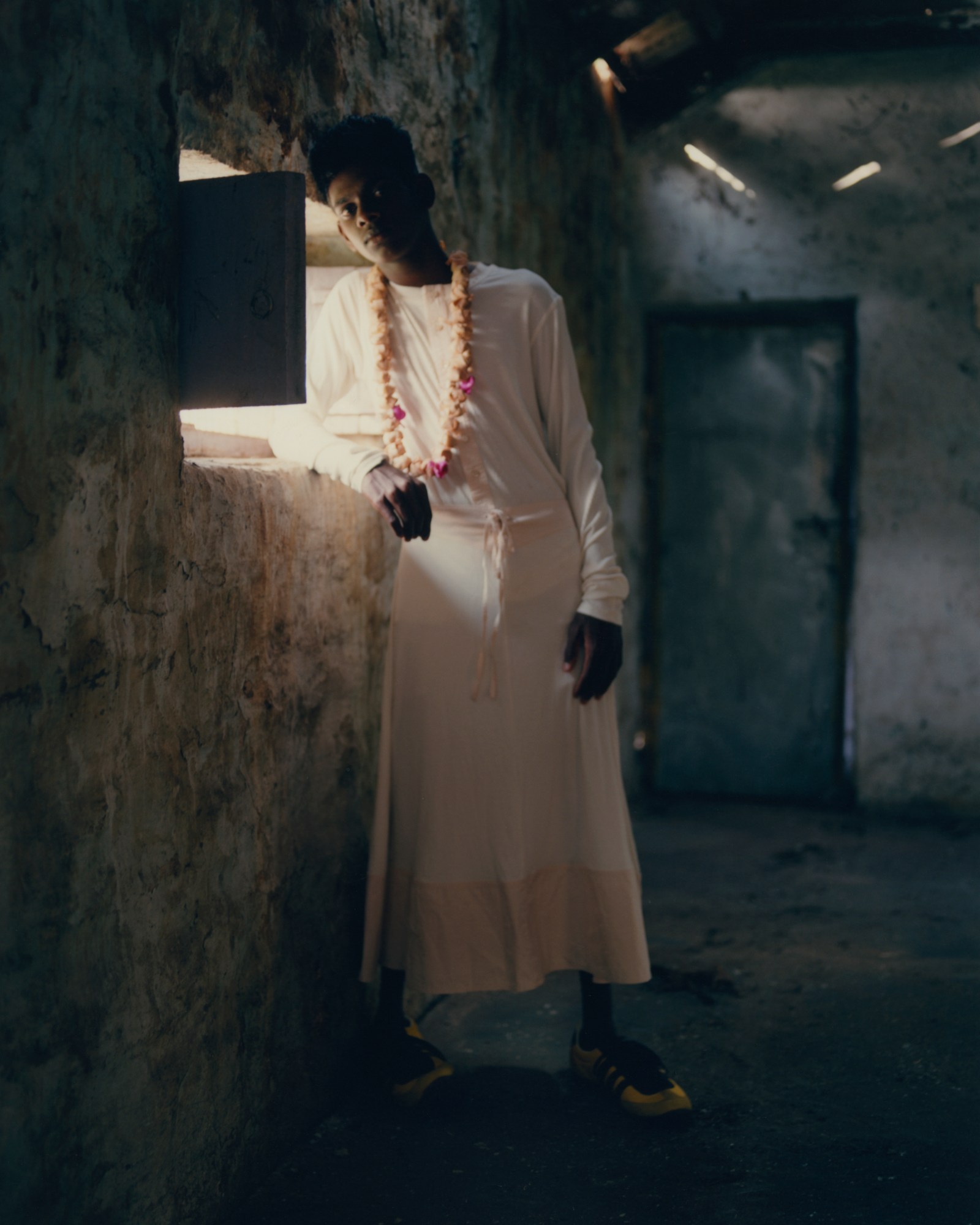
So how did you first come across each other’s work?
Grace Wales Bonner: I think I first discovered Laraaji’s music around the time I was researching for the Serpentine show in 2019. There was something really enticing about his sound, it really drew me in. I then became even more interested in him as a person when I saw what he looked like and how he lives — his wearing of all orange, for example. I did some research, and learned of what an inspiring journey he’d had. We then connected at the time of the exhibition, and he came to London to be part of it — that was the first time that we met in person.
Laraaji: When you say that you heard my music and it drew you in, that really validates the place I usually am when I am channeling, composing, or performing music. It’s about contacting a universal sense of present time and letting my experience of this universal place wash through and direct the flow of music.
GWB: That’s really beautiful. Does it take quite a lot of presence and attention to connect to that place?
L: Yes! I first began exploring meditation, mindfulness and internal sitting in the early 1970s. That was punctuated in 1974 by a sound hearing experience — a hearing of an internal cosmic orchestra that was simultaneous with a meditation state. There was a sense of timelessness or eternity, the sense that everything in the universe was happening simultaneously. It activated my heart chakra on such a deep level, I felt like I fell in love with the universe in a very deep emotional way. The day after, I went to the Lincoln Center Library in New York, and started doing some research to find anything that could point to the experience. I found that in several religious traditions around the planet, there was an observance of this inner sound. Shortly after that, I found myself pawning my guitar for money. Right then, this voice welled up inside of me, saying, “Don’t take money for your guitar, swap it for the auto-harp in the window.” I decided to go with that because I wanted to see where this rabbit hole would lead. As it turns out, the auto-harp was the instrument by which I could reference that experience and share its impact. So when Grace says that my music drew her in, it validates the experience I had in 1974 and my desire to share it with the world.
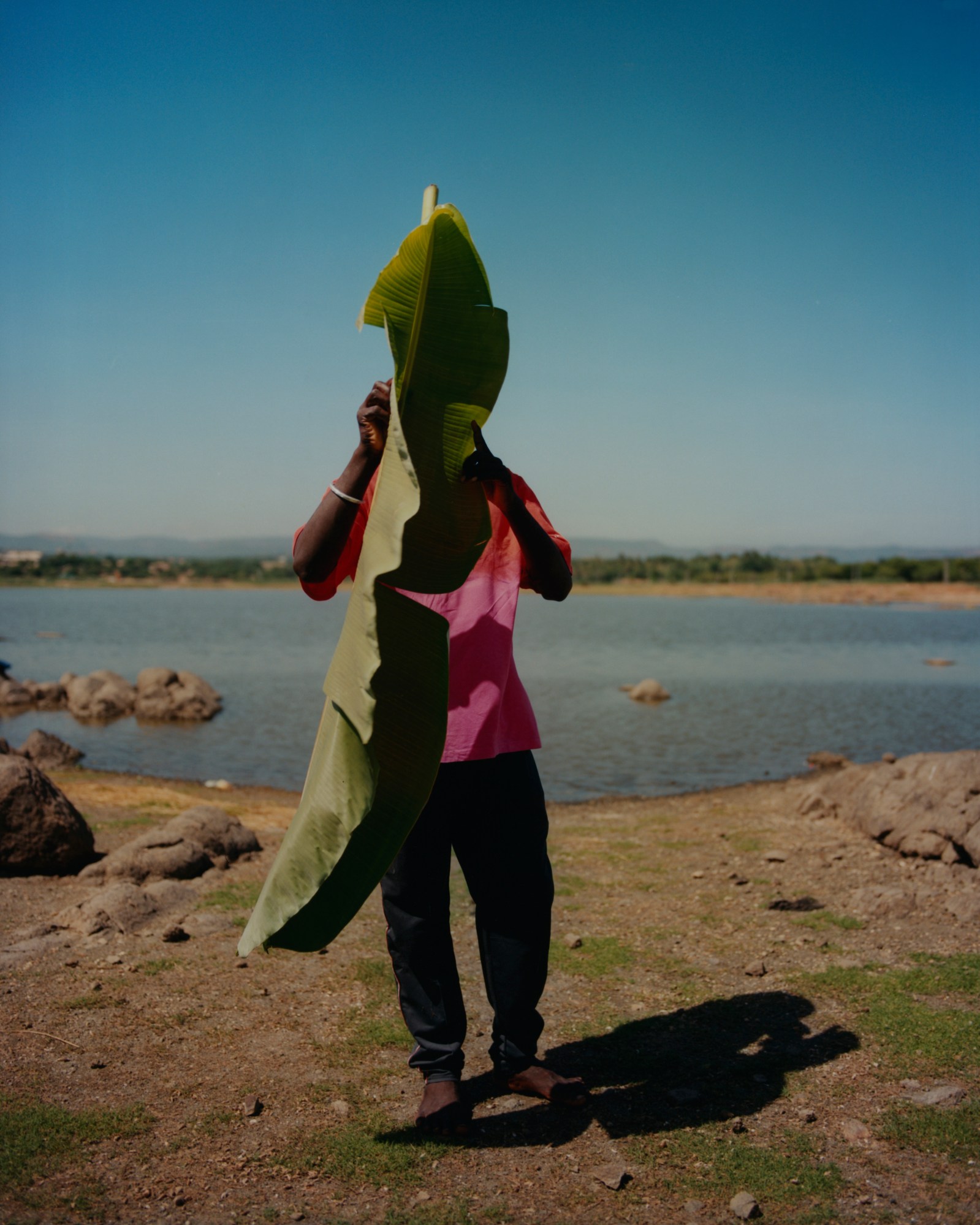
What drew you into Grace’s work and world?
L: Well, I had not known about Grace until I met her in London at the gallery, and I was… I won’t say startled, but impressed. The people around her really spoke about her work as the work of an innovative artist. There was something non-verbally stimulating about being in the presence of this sparkling brilliance that I was seeing around me. There was an embracement of Blackness, Black culture, Black resonance that I had not been in the presence of before. It was really my first time being in the presence of an artist whose focus was so clear and embracing.
Where would you say your creative approaches and practices overlap?
GWB: Laraaji’s vision is really all-encompassing, so the sound is very much in tune with the experience of it and the aesthetics around it. It feels holistic and complete. How you live, how you dress, and how you create spaces — there’s a real consistency and coherence with that, which I find really inspiring. It’s something that I aspire to with Wales Bonner, having this clarity of message and creating something that’s quite experiential; something you can actually feel, an environment that you can be part of. With Laraaji, there’s real attention to detail, precision and beauty invested in the way that things are created, and that’s really consistent in everything I see that he’s produced. There’s such a sense of a world around it — and it’s a world that’s accessible. He’s very generous.
The point of departure for this capsule collection was Laraaji’s 1984 album Vision Songs Vol. 1. Could you tell us about the process of making it?
L: Well, it was produced and recorded in the 1980s, at a time when I was traveling throughout the United States performing for New Age conferences, meditation centres and yoga centres that would invite me — in Florida, North Carolina, Southern California, Minnesota. Often, someone would come up to me after a performance and say, ‘Hey, I’ve just got some kick-butt recording equipment, and I wonder if you would come by my home and play some of your music so I can test it out.’ Over the course of maybe a year or two, I built this collection of music that I had recorded. The intention of the music was to support people that I knew who were in meditation — inwardly mobile music, I call it; people who were exploring new consciousness, new ideas, and were open to quantum energy shifting. Many of the songs just came up and were recorded without me knowing where I was going — the words would just come to me. The feeling at the time was euphoria, because I myself was diving deeper and deeper into my own inner meditation stream. I was continuously in a state of bliss, gratitude, joy and optimism.
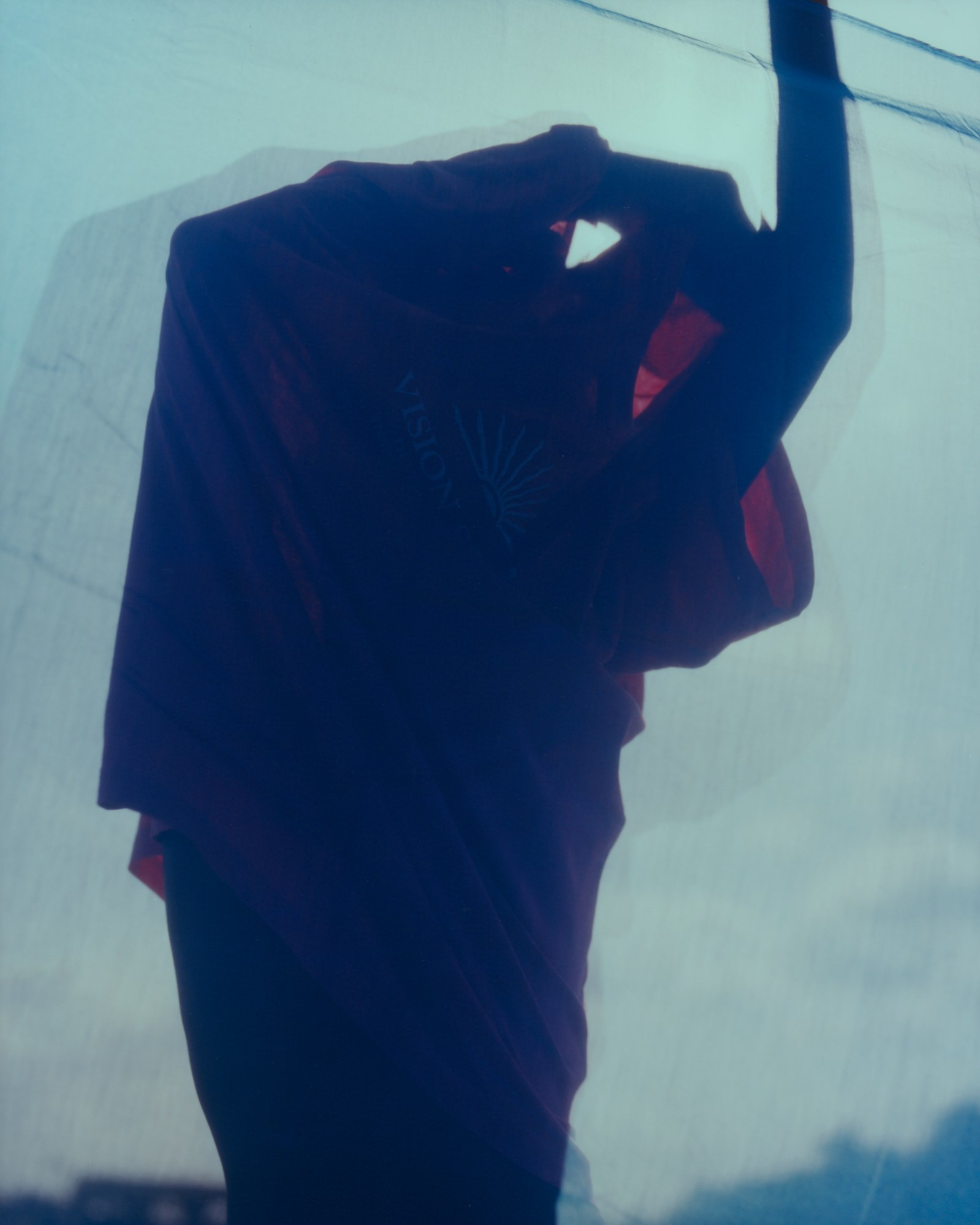
Grace, what were your feelings on first hearing the album?
GWB: I think it really speaks for itself in a way, it really draws you in. It’s so restorative and reflective, and it changes my headspace when I listen to it. I also think it’s very seductive.
How did you approach translating everything you’ve discussed into fashion?
GWB: It’s always a hard task but I think that the challenge of translating such a full experience into clothing is something that really inspires me as a designer. That said, I think it also comes down to creating garments that are part of a way of living. Also, the original artworks that Laraaji created around the album are so incredible, so I wanted to be quite consistent with that and give visibility to their beauty.
Laraaji, tell us about your relationship to fashion and dress. Grace mentioned your love of wearing orange. What’s the significance of the colour to you?
L: Every time I talk on this subject, it’s a little different, but orange — or sun colors is another way of putting it — suggests fire, specifically the transformative force of fire. It signifies always remaining present without the pull of the past, a continuous reminder of letting go — that I’m free to be free to be free. In the early 80s, I met a spiritual mentor who was psychic enough to realise that I had had this inner initiation 5 years earlier that was trying to surface. He advised that I wear more sun colours to speed up the process, and in 1985, he offered me an initiation ceremony that marked my commitment to wearing mostly sun coloured clothing. Wearing the orange now is effortless, though — I think of it as creative work in progress. When I’m riding down the street in a new town and I see orange in a store window, I’ll ask the driver to stop so I can check it out!
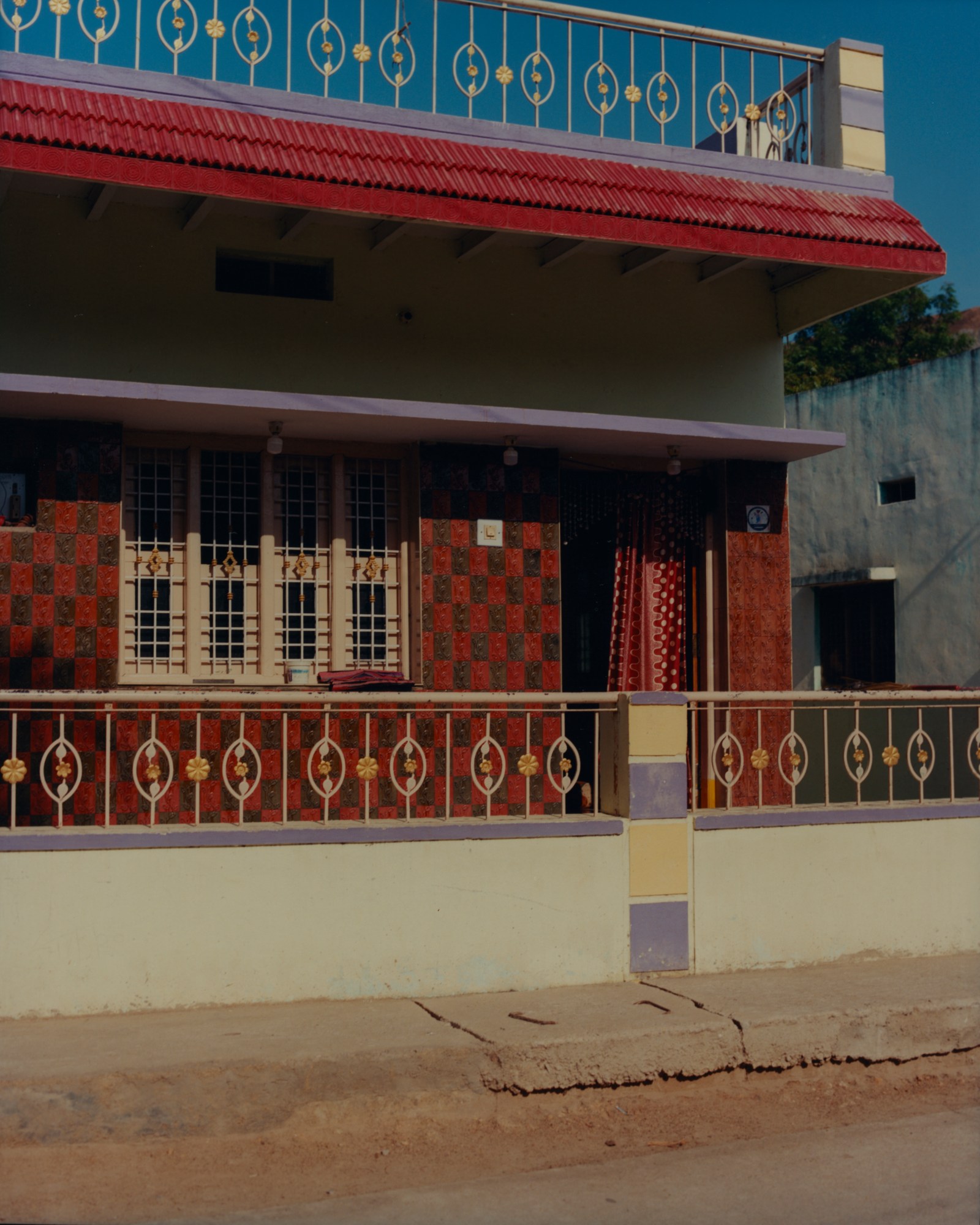
What do you hope your audiences will take from this collaboration?
L: Grace’s work inspires and encourages you to entertain the idea of inviting yourself over into a new mind, new attitudes, new perspectives. That aligns with the music that comes through me. As I’ve experienced it, it really keeps portals open for you to move into a new sense of what the human physique can look like. Her designs pull me out of old modes of expectation, and Visions Songs is definitely an invitation to think, feel and act in new ways, and embrace new realms of what the imagination can bring through to us.
